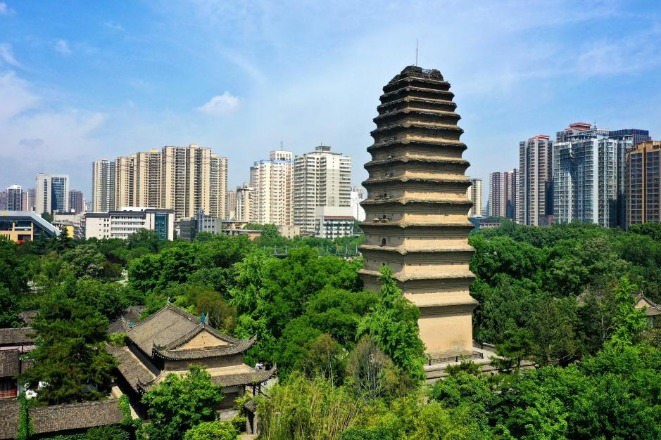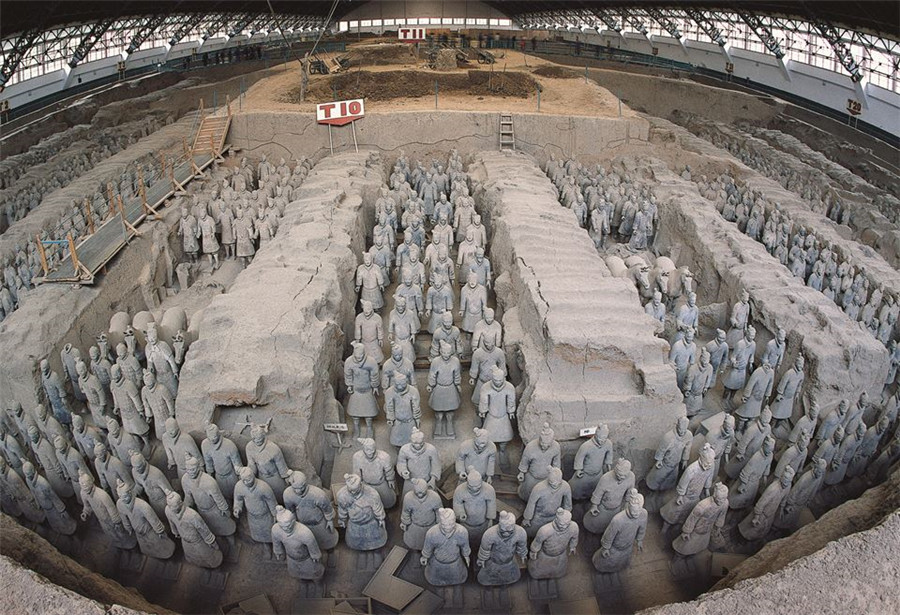
History and Culture
- Ancient Capital: Xi’an, formerly known as Chang’an, has a history of over 3,100 years and was the capital of 13 dynasties, including the Zhou, Qin, Han, Sui, and Tang dynasties. It is one of the birthplaces of Chinese civilization and Eastern culture.
- Historical Sites:
- Terracotta Army: A UNESCO World Heritage Site, the Terracotta Army is one of the most significant archaeological discoveries of the 20th century. It features thousands of life-sized sculptures of soldiers, horses, and chariots that were buried with Emperor Qin Shi Huang.
- Ancient City Wall: One of the best-preserved city walls in China, stretching over 13 kilometers. Visitors can walk or bike along the wall for panoramic views of the city.
- Big Wild Goose Pagoda: Built in the 7th century, this nine-story pagoda is a symbol of Tang Dynasty architecture and a UNESCO World Heritage Site. It houses ancient scriptures and religious artifacts.
- Small Wild Goose Pagoda: A stunning Buddhist pagoda dating back to the Tang Dynasty, standing at 43 meters tall with beautiful brickwork and intricate carvings.
- Muslim Quarter: A vibrant area showcasing Xi’an’s diverse history, with colorful stalls selling delicious street food and traditional Islamic architecture.

Geography and Climate
- Location: Xi’an is located in the middle of the Guanzhong Plain in Shaanxi Province, with the Weihe River running through it.
- Climate: The city has a temperate semi-humid climate with four distinct seasons. Summers are hot with an average temperature of around 30°C (86°F), and winters are cold with an average temperature of around 3°C (37°F).
Economy
- GDP: In 2024, Xi’an’s GDP amounted to 1.33 trillion yuan ($182.53 billion), with a year-on-year increase of 4.6 percent. The added value in the city’s primary, secondary, and tertiary industries reached 32.01 billion yuan, 387.4 billion yuan, and 912.37 billion yuan, respectively.
- Key Industries: The city’s economy is driven by industries such as automotive manufacturing, photovoltaic technology, and aerospace. Major companies include BYD, Longi Green Energy, and Shaanxi Heavy Automobile.
Population
- Population: As of 2023, the population of Xi’an is approximately 13 million people.
Transportation
- Metro: Xi’an has a well-connected metro system that is an efficient way to visit major sights. The metro lines run from 6 a.m. to 11 p.m. and are generally crowded during rush hours.
- Buses: Buses are widely available and offer a budget-friendly travel option, reaching every corner of the city.
- Taxis and Ride-Hailing: Taxis are easy to use and convenient, particularly for visitors unfamiliar with local routes. The starting fare is between 9 and 10 RMB. Ride-hailing apps like Didi are also popular.
- Bicycles: Xi’an is a very bikeable city, with bike lanes on many streets downtown. Biking along the Ancient City Wall is a popular activity.
- High-Speed Rail: Xi’an is connected to other major Chinese cities by high-speed rail, making it an ideal base for regional travel.
- Airport: Xi’an Xianyang International Airport is located 40 kilometers from the city center and serves both domestic and international flights.
Food and Accommodation
- Food: Xi’an is famous for its unique culinary offerings, including biangbiang noodles and yangrou paomo (crushed flatbread in lamb soup). The Muslim Quarter is a must-visit for food lovers, with a variety of street vendors serving authentic flavors.
- Accommodation: The average cost of living in Xi’an for an expat is around $1,000-$1,500 USD per month. The cost of a one-bedroom apartment is around $400-$600 USD per month, and a two-bedroom apartment is around $600-$800 USD per month.
Xi’an is a city that beautifully blends ancient history with modern development, offering a rich cultural experience and a vibrant urban life.